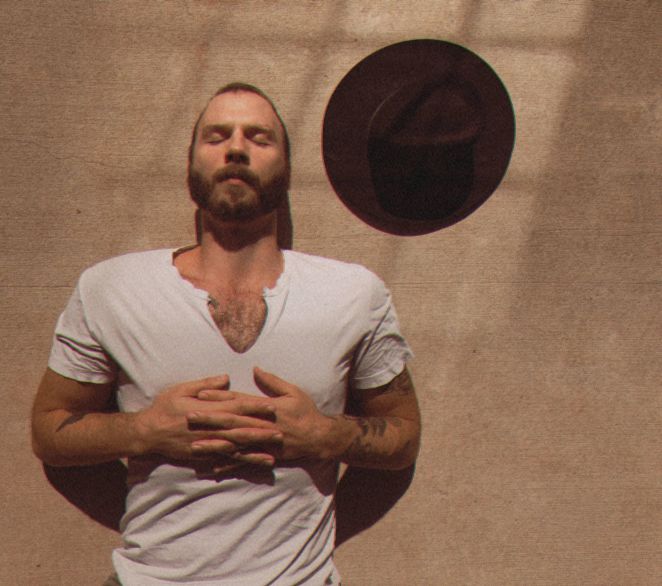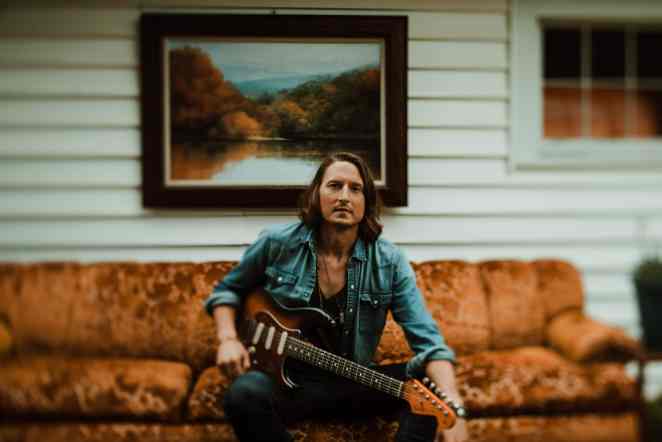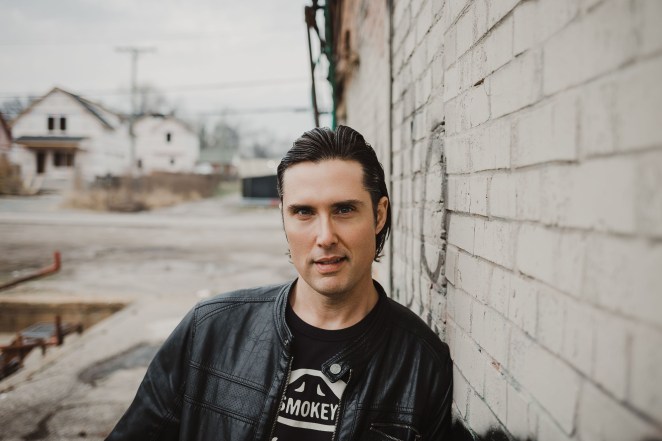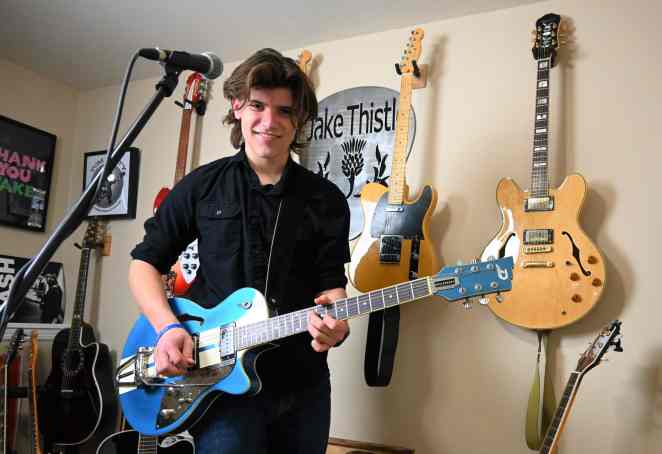We’ve turned the spotlight on many indie artists and their new music this past year. But what are their tools of the trade? We asked several of them to give us the lowdown on the gear they use to create their songs. In the first of what will be a semi-regular feature here on American Songwriter, our first group let us know what they use and why.
Hunter Tynan Davis (featured here):

John Pearse Strings - These are hands down (IMHO) the best strings no questions asked. I play in a lot of open tunings and I just haven’t found another set of strings that maintain their responsiveness/tonal qualities over time and stay in tune while taking a beating.
Shubb Original C1 Capo - An industry standard and deservedly so, this is my absolute go-to capo. The Shubb C1 allows you to set your own tension levels, which is crucial for keeping the guitar in tune and the intonation spot on. A runner up is also the G7th Performance 3.

Gator Transit Series Acoustic Gig Bag - I have been using this gig bag for almost three years and I don't see myself using any other gig bags for a long time. Shoulder straps are comfortable and stitched incredibly well, three (transit series) different compartments for storage, and customer service that's by far the best I've dealt with.
Gibson J45 (Custom) - Admittedly, I have been a Martin guy my entire life. With that said I absolutely fell in love with the Gibson J45 after a recording session a few years back. My Gibson J45 Custom stays in Open E or Open D and its resonance/playability are second to none.
Martin D-15 Mahogany Dreadnought - This is the workhorse Martin of workhorse Martin guitars (IMO). Of all my Martin guitars I’ve written more songs on this particular model than any other. The D-15 is reliable, balanced, warm, and just an overall beautifully constructed piece of wood. For the money it can’t be beat.
Szlachetka (featured here)

Martin OM-28V: This is my main acoustic. I bought it when I was living in San Diego back sometime in 2002/ 2003. I've written most of my song catalog with this guitar. It is absolutely part of me and feels like family at this point. It's one of the most comfortable acoustic guitars I've ever played and has been worn in all the right places at this point.
'62 Reissue American Fender Stratocaster: This is my main electric. I bought it back when I was in college and it's logged some serious miles with me. It's been on every album I've ever recorded along with other albums/ recordings I've done for other artists and bands. I don't have to think about anything when I play this guitar, it's a complete extension of me.
1962 Fender Princeton Amplifier: I bought this about 5 years ago when I was still living in Los Angeles and it has become one of the main factors of my electric sound. It's been on every album I've recorded since I bought it along with other albums/ recordings I've done for other artists and bands. It is also the main amp in my touring rig. I normally use 2 Fender Princeton amps for my live set up. This amp has such a unique mid-range tone characteristic and it really inspires me anytime I play through it, whether I'm practicing or writing at home, or in the studio or on tour. I feel fortunate I found this amp.
Buy the award winning SPARK and get a FREE Dunlop Jacquard Fillmore Strap! Valid 12/23 through 12/24!G7 Newport Capo: I love this capo! Capos can be very finicky in my opinion and they can really mess with a guitar intonation. This capo always accommodates any guitar's intonation that I'm using, and it also does a fantastic job at keeping equal pressure on all of the strings which makes playing rhythm, leads or fingerpicking so much easier. Especially when I'm writing and I'm trying to find the right key or voicings for a new song, this capo is so easy to use and helps the process flow that much better. It's another thing that I don't have to think about when I'm using it.
Shure MV88 Stereo Condenser Mic: This is one of the newer pieces of gear I've started using over the past 6 months. It's a stereo condenser mic that plugs right into my iPhone. It has a downloadable app that allows you to change the input level, compression levels, mic spread, EQ and more. It's pretty incredible and has totally changed my video content game during the COVID quarantine era. Aside from audio on video, it's great for high quality demos or work tapes when I'm writing a new song.
Small Reactions (featured here)

List and Descriptions provided by singer/guitarist Scotty Hoffman.
Tascam DP008 / Voice Memos App: I didn’t have an iPhone until 2013. Since then, I’ve recorded thousands of ideas using the voice memos app. I like to think of it as my Dictaphone or something similar, I don’t know. Doesn’t Joni Mitchell have a song about her tape recorder? Same thing with the DP008 for demoing songs. It’s a perfect little thing. You can literally place it on a drum set to record drums. The condenser mics are great — don't let anyone tell you otherwise. It allows you to just do the song, which I can’t with software a lot of the time.
Line6 DL4: I’m not even sure what the max loop time is on this. I have no idea what the delays sound like. I’ve never taken it off “Looper.” I don't know what separates this looper from others because I’ve never used anything else. This one has a feel to it, and it's an invaluable tool for writing.
Boss Pedals (Boss Vb-2 Vibrato, Boss PS-3 Pitch Shifter, Boss DD-2 Digital Delay): You don’t need to think too much about these — each one will make a guitar poke out in a mix. They’re all simple modulations and delays which allow you to focus on melodies. They’ll never come off a board, and I don’t know when I’ve last played without each of them.
1960 Fender Jazzmaster (in some god-awful blue refinish): It’s an easy guitar to play when you're sitting down, you have bell tones behind the bridge, and a tremolo bar with an ancient spring that has a good feel. This one has a skinny neck, too. There's so many sounds you can work out of these guitars — it’s sad when people just chord them. I very much had a connection with this one when I first saw it. It looked like a beat up road guitar, which I think it was (it had kind of a well-known previous owner). I’m not necessarily in the old guitar camp, but there's something about spending years playing an instrument that's twice your age.
Silverface Fender Reverb / Musicman HD 130 212: Both very different but essential amps to me. I love the cleans. I’m a very rhythm / lead kind of person, and that style suits these amps very well. I’m lucky enough to be able to play through amps — I know that’s kind of a thing now, where a lot of people can't or don't know how to.
Buy the award winning SPARK and get a FREE Dunlop Jacquard Fillmore Strap! Valid 12/23 through 12/24!Don Pedigo (featured here)

Acoustic Guitar: My trusty Guild GAD-40ATB gives my sound a little bit of uniqueness when it’s recorded. It’s the guitar that’s begging you to play it. People ask many times, “what is that acoustic?” It came to me in Phoenix after my favorite old Alvarez was run over by the airline I came in on. So from the beginning this Guild came with a story and continues to pull me to it for more. You’ve gotta have the guitar that calls you to pick it up.
Capo: If you’re like me and your voice many times wants to land in what I call the piano keys of Bb, Eb and F, the capo is essential. I use a Kyser on my Guild as well as my Gretsch Electromatic. The guitar sounds best to me in the open chord keys. Moving the capo up or down so I can still play in the G, A, C, D and E key positions is wonderful. I also use the capo to change chord structures but not the key I’m in. I sometimes do this to find new ideas with a melody I’m stuck on or a bridge I can’t find my way across (ha ha).
We are so fortunate to live in a time where now capturing music is literally in the palm of our hands. In my opinion, smart phones are one of the greatest pieces of gear for a songwriter. I used to live at the library and would sometimes even carry books into my songwriting sessions. We are less restrained these days in our search for information and for making a decent recording.
Jake Tavill (featured here)

Native Instruments Komplete Kontrol S88 MKII Midi Keyboard/Controller: Forget any preconceived notions of toss around midi keyboards, this is a finely tuned MACHINE. As a keyboardist I’ve always been turned off by midi keyboards and plugins for use on acoustic or electro-acoustic piano tracking due to a lack of proper weighting and feel, however, the fully-weighted S88 MKII changed that for me. As a songwriter needing to quickly find a sound that works for a demo or as a producer needing to quickly throw a keys layer on a track, without being able to spend hours setting up to track it, this fully-weighted midi keyboard becomes my go to tool to get the job done. It may be a little more expensive than other midi keyboards, but definitely worth it for the added feel and functionality.
Apogee Quartet: The centerpiece of a studio no matter the size is always the interface. Without a solid converter you’re not recording anything (unless you’re having fun with tape). My Apogee Quartet has lasted me the better part of a decade. Apogee is known in the industry for the clarity of their converters, and building on top of that, the added preamps in the quartet provide you with solid clean gain that lets the source shine. The monitoring control and output routing of the Quartet is also incredibly intuitive for using multiple monitors and very useful for revamping. The Quartet checks all of the boxes a great interface should and is a lasting investment.
BAE 1073 DMPS: Most interfaces these days provide you with clean preamps that, though useful on many sources, can be very sterile where a warmer sound is needed. If you’re setting up a studio, it’s a great idea and sometimes necessary to have an alternative to these that you can reach for when needed. BAE has created an incredibly affordable stereo-capable (dual mono) preamp unit based on the famed Neve 1073 preamp that provides the hallmark crisp highs and harmonically rich low-end of its inspiration. Currently my go-to preamp for vocals, I frequently use them on keys, guitar, percussion, and more.
Adam A7X Monitor (Pair): The hardest part of being an artist and/or producer is listening to yourself critically, but the one thing that can ease the frustration is a pair of quality monitors that you can trust. I have 2 new albums coming out, one a South Korean-collaborative album called The K-Seoul Sessions, with an accompanying documentary, and the other is 10-song album titled Walk With Me.
Over the last few years the Adam A7X monitors have risen to the forefront in near-field reference appearing on more and more consoles and desks all around the world. Even if you don’t mix your own work it is extremely important that you have proper monitors that you can reference on so that you can actually hear the music that you’ve made. You need to be able to clearly hear what you’re tracking as well as be able to give informed notes to your collaborators. Don’t skimp here, good monitors can prevent a lot of stress.
Beyerdynamic DT770Pro Headphones: Headphones are the most worn accessory in the studio. These are going to be on your head sending music to your eardrums for hours-on-end, so they need to comfortable both to wear and to listen to. The Beyerdynamic D770Pro headphones provide a pair of headphones that feature a remarkably transparent frequency curve for headphones that lets you hear your cues without obnoxious bleed. They also make a solid headphone reference during mixing.
Jake Thistle (website here)

I have a lot of very useful gear that I love for both home and gigging use, but if I had to start over with five core pieces, I’d go with:
Boss GT-1000: This piece of gear was a game-changer for me. It packs just about every amp and Boss pedal into one small unit. That means that I can travel much lighter and plug directly into any PA or soundboard rather than requiring a PA and a separate guitar amp. It also makes it much easier for me to blend the mic and guitar sounds using the board, and even easier to record gigs with high quality sound.
Duesenberg Mike Campbell Starplayer TV: I love guitars and have many of them, but if I had to only keep one, it would be this. The guitar is extremely well made and pairs a custom humbucker with a P-90 pickup to get a wide range of tones. The Duesenberg tremolo system is also the most stable I’ve ever used. The guitar can play any genre well, stays in rock solid tune, and looks amazing-- people ask me about this guitar far more than any other I play.
Boss RC-30: Simple, but essential. When I gig, I often play solo. As I play, the RC-30 allows me to loop a section of the rhythm guitar as I sing so that I can easily go into a solo. Very simple and easy to use-- and built to last.
Shure SM58: I’ve used many microphones, but the Shure is a reliable and versatile standard that I use for every gig.
Zoom L-20: The newest on my list, this soundboard is value-packed for many purposes. Not only does it serve as a great sound interface to a computer when needed, but it has an easy-to-use onboard interface to layer tracks recorded right on the board. In fact, I just recorded an entire album on this board without using a computer at all. The 20 inputs are also enough for a band situation, and each input can be recorded as its own track, making recording and mixing band gigs simple.
BIAS Holiday Savings are ON! Enjoy 8 days of Special Deals, PLUS get 50% off Upgrades! Valid only through 12/27!



